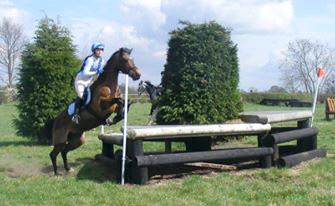
A couple of weeks ago, I received the phone call I’ve been dreading since moving away to university.
My horse had had an accident in the field, hurt her leg, and the vet was on the way. That’s all the information I received until the next call, with the vet on the other end.
“Communication within the tarsal joint… leg swinging… don’t think the long bone is actually fractured but significant damage to tendons at the back… rapid respiratory rate.”
As soon as I knew which way the conversation was going, I barely heard the rest.
My girl, who I’d had for 10 years. My girl, who’d been passed from pillar to post before we gave her the stable long-term home she’d never had. My girl, who had taught me to ride by being an infuriatingly awkward cow at the best of times.
My girl, who, when in the mood, was unbeatable and with whom I achieved a national title. My girl, who was the only one I trusted not to hurt me after my four-week stint in hospital when another horse landed on me. My 21-year-old girl, who’d been steadily getting stiffer from arthritis over the last few months. My girl, who, when I last rode about a week before this incident, was 10 times better than she’d been in a long time.

My girl was about to be shot…
All the vet language stopped making sense, the clinician rationale went out the window. I just needed to know one thing, vet to vet student: is this fair? Could it wait five hours for me to tear down the M6 to say a final goodbye or would even that be an unnecessary amount of suffering?
I think I already knew the answer.
I felt utterly helpless and beyond reason for the following days, but as the shock wore off I was able to consider things retrospectively.
Having spoken to the family that were with her at the time, I’ve gathered a bit more information and been able to convince myself it was the right and only decision.

I’ve seen many animals have to be euthanised, for varying reasons. Some cases were more upsetting than others, but, for the most part, I’ve been able to detach myself from it – always telling myself it was for the best, in the animals’ interest for welfare reasons, and that there were no alternatives.
They say clients will only take in a small proportion of bad news. Now I know what that means. All the vet talk just went straight over my head, and the only thing I really got was that there was only one way it was going. This has outlined the importance of clear and concise communication when delivering bad news to my own clients in the future.
In communication skills classes, we’re told to encourage owners to bring someone with them who can write down key points and ensure they understand before proceeding. Now I appreciate the value of this so much more, having been the receiver instead of the bearer of bad news.
While the pain is still raw, I think I can take something from this to help me be more empathetic and ensure I communicate effectively in the future.
You can steal all the ham sandwiches you want now, Pepsi.


Leave a Reply